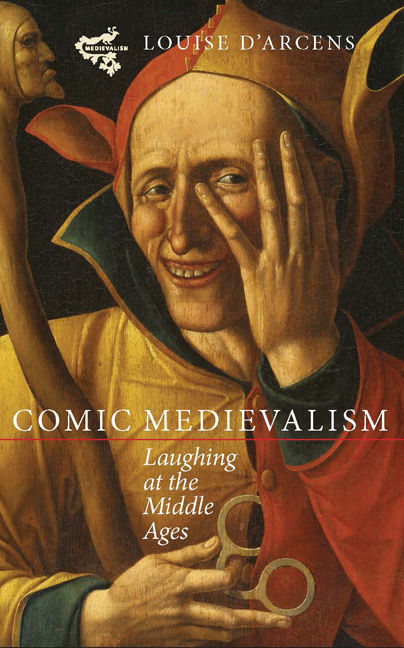Afterword: Laughing into the Future
Published online by Cambridge University Press: 05 November 2014
Summary
In the essay ‘A Drama of Dolls’, which appeared in the 1911 volume Alarms and Discursions, G. K. Chesterton tells of a trip to the Yorkshire dales where he saw ‘an old puppet-play exactly as our fathers saw it five hundred years ago’. This puppet show, based on the legend of Faust, leads Chesterton into a meditation on inversive medieval humour that could almost be described as Bakhtinian avant la lettre. Most striking in this short meditation, however, is the conclusion Chesterton draws about the strange, contradictory comedy of the medieval puppets and the effect it had on him: ‘[t]he dolls were at once comic and convincing; but if you cannot at once laugh at a thing and believe in it, you have no business in the Middle Ages. Or in the world, for that matter.’
The idea that representing ‘the medieval’ generates a comedy that is at once sceptical and credulous, ironically distant yet emotionally invested, has been at the core of this book's investigation of comic medievalism. In the introduction, and throughout the subsequent chapters, the word that I have used most often to describe this paradoxical state is ‘ambivalent’. Although this word is sometimes used synonymously with words such as hesitant, dubious or doubtful, and as such can carry a faintly negative charge, it should by now be clear that the ambivalence at the heart of comic medievalism, taken as a whole, should be understood not as implicitly apprehensive toward the medieval past, and thus given to ridicule, but as genuinely composed of opposite and contending impulses.
- Type
- Chapter
- Information
- Comic MedievalismLaughing at the Middle Ages, pp. 181 - 184Publisher: Boydell & BrewerPrint publication year: 2014



